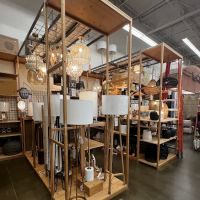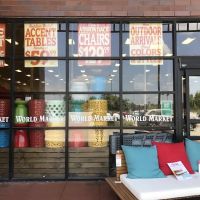Plastic-Free Packaging: Embracing Sustainability in the Modern World
- Why Plastic-Free Packaging Matters
- The Benefits of Switching to Plastic-Free Packaging
- Types of Plastic-Free Packaging Options
- Real-World Examples of Plastic-Free Packaging
- How to Make the Switch to Plastic-Free Packaging
- Shop Plastic-Free Packaging Products
Why Plastic-Free Packaging Matters
Plastic pollution is one of the most pressing environmental issues of our time. With billions of tons of plastic ending up in landfills and oceans each year, switching to plastic-free packaging is a crucial step toward reducing environmental impact. By eliminating plastic packaging, we can minimize waste, prevent pollution, and contribute to a cleaner, healthier planet.
Plastic-free packaging also addresses growing consumer demand for sustainable, eco-friendly products. As consumers become more aware of the environmental effects of plastic waste, they are actively seeking brands and products that prioritize sustainability. Transitioning to plastic-free packaging is a positive move not only for the planet but also for your brand’s reputation and consumer trust.
The Benefits of Switching to Plastic-Free Packaging
Switching to plastic-free packaging offers numerous benefits that extend beyond environmental protection. Some key advantages include:
- Reduced Environmental Impact: By eliminating plastic, you contribute to less plastic waste and pollution. This helps protect wildlife and ecosystems that are affected by plastic debris.
- Enhanced Brand Reputation: More consumers are looking for brands that align with their values. Adopting plastic-free packaging signals to your customers that you care about sustainability, which can increase brand loyalty.
- Cost Savings in the Long Run: While the initial cost of plastic-free packaging may be higher, many sustainable alternatives can lead to long-term savings, especially when considering recycling costs and waste management.
- Healthier Alternatives: Many plastic-free packaging options are made from natural, biodegradable materials, which are often safer for both consumers and the environment.
Types of Plastic-Free Packaging Options
There are several plastic-free packaging alternatives available today, each designed to reduce environmental impact while maintaining product safety and freshness. Here are some popular options:
- Glass: Glass containers and bottles are one of the most effective alternatives to plastic. Glass is fully recyclable and can be reused multiple times, making it an eco-friendly choice for packaging liquids and food products.
- Paper and Cardboard: Paper and cardboard packaging are biodegradable and compostable. They are often used for items like food packaging, shipping boxes, and product wrappers.
- Metal: Aluminum and tin cans are commonly used for beverages and other food products. They are lightweight, durable, and 100% recyclable.
- Biodegradable Plastics: While still a type of plastic, biodegradable plastics break down more quickly in the environment than traditional plastics, making them a less harmful alternative.
- Plant-Based Materials: Packaging made from plant-based materials such as bamboo, corn starch, and mushroom fibers is becoming increasingly popular. These materials are compostable and can be a sustainable choice for certain types of products.
Real-World Examples of Plastic-Free Packaging
Many brands and companies have already taken significant steps toward eliminating plastic packaging. Some notable examples include:
- Lush Cosmetics: Known for their handmade cosmetics, Lush has made a commitment to using plastic-free packaging for their products, including shampoo bars and soaps.
- Unilever: Unilever has pledged to reduce its plastic packaging by 50% by 2025. The company has begun using more recycled materials and is exploring alternative packaging methods for their consumer goods.
- Bee’s Wrap: Bee’s Wrap offers sustainable alternatives to plastic wrap, using organic cotton and beeswax to create eco-friendly wraps for food storage.
These companies are leading the way in sustainability, showing that it is possible to create innovative packaging solutions that benefit both consumers and the planet.
How to Make the Switch to Plastic-Free Packaging
Making the switch to plastic-free packaging might seem challenging at first, but with the right approach, it’s entirely feasible. Here’s how you can start:
- Evaluate Your Current Packaging: Assess the types of plastic packaging you currently use and identify which products can be replaced with sustainable alternatives.
- Research Sustainable Options: Look for eco-friendly packaging suppliers that offer plastic-free alternatives, such as biodegradable bags, cardboard boxes, or glass containers.
- Start Small: Begin by switching to plastic-free packaging for a few products and gradually expand as you find more suitable alternatives.
- Communicate with Customers: Make sure your customers are aware of your commitment to sustainability. This can be done through marketing campaigns, packaging labels, or social media updates.
Shop Plastic-Free Packaging Products
If you’re ready to make a change and explore plastic-free packaging options for your business or personal use, Scent Snob offers a variety of sustainable products that can help you reduce plastic waste and promote eco-friendly practices. Whether you're looking for packaging for personal care products, food items, or other goods, Scent Snob provides high-quality alternatives that align with your values.



0 comments